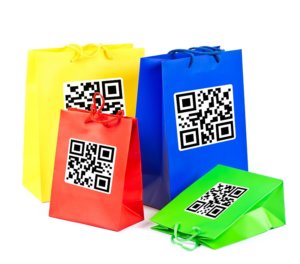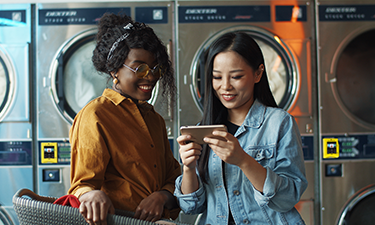14 Ways You Can Prepare Your Business for the Cashless World
The world is becoming increasingly cashless. People all over the world, have become accustomed to paying with their credit cards and other cashless methods including micro transactions, for which cash was traditionally used. In more and more countries it’s becoming rarer to see cash: Australia, Canada, Sweden, South Korea, China and the list goes on.
This shift has been felt by retail stores for years but it’s slower with absentee businesses and unattended automatic machines, where typically coin mechanisms and bill validators were the norm. Many operators of unattended machines like vending machines, laundromats and car washes have begun to note the shift and added cashless payment acceptance with credit card readers and other contactless reading devices. The results of these installations are felt in revenue – the average spending per sale goes up and the overall transaction volume rises.
We’re going to look at the various ways you can prepare your business for the impending cashless world and how you can take advantage of the technology associated with cashless payments to make your business run more efficiently.
1 – Offer Multiple Payment Options
Not every person behaves the same and each country’s payment infrastructure and preferences are different. As a business you want to cater to every possible customer, appealing to a diverse market – all ages and walks of life, opening you up to more sales opportunities.
For any future payment system you choose to install you want the ROI to sustain your business, anticipating any upcoming payment trends. To do this make sure you futureproof your payment system with all the upcoming payment types. ◊
What is contactless payment?
Contactless payment is when a person places their card over a payment terminal, allowing the transaction to be processed without needing to insert the card into the reader or entering a PIN code. Contactless is commonly called “tap and go” and is popular throughout many parts of Europe, the UK, Australia, and Canada.
Relatively new to the US, inserting credit cards into readers (and sometimes entering a PIN code to authenticate transactions) will become increasingly common. In the UK, the tap and go habit caught on after contactless was integrated into the transit system in London. With New York City integrating contactless payment in its transport system, MTA, similar results are expected.
How does contactless payment work?
Embedded in all contactless credit cards are chips that emit radio waves and an antenna to communicate with card readers. Using radio frequency identification technology (RFID), the card communicates with the payment terminal, and enables payments to be processed quickly.
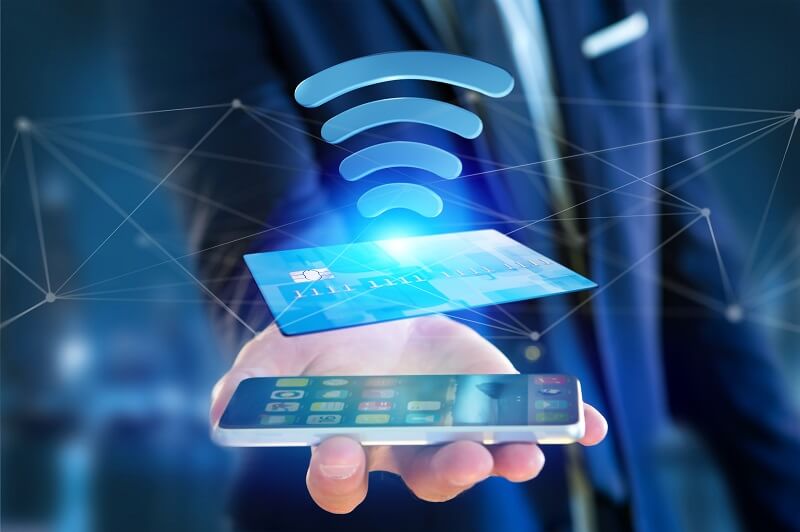
Contactless credit cards and mobile payments are growing in popularity across the world. Some countries such as Sweden, China and Australia are more than 90% cashless.
Contactless payment is safer than magnetic stripe cards
Since contactless payments are authenticated with encrypted codes, they’re more secure than magnetic stripe cards, which store data statically and can be easily cloned. Contactless credit cards are harder to hack and offer users more protection.
Contactless cards process faster
Contactless credit cards process transactions faster, taking approximately 15 seconds. Comparatively mag-swipe cards and EMV chip cards typically take double the time to process.
Start accepting contactless payments
What about mobile payment?
Mobile payment is an umbrella term payment via smartphones and include mobile wallets, Bluetooth and QR codes. It’s been predicted that by 2024 global mobile payments will reach $3.6 trillion (USD) and is worth offering as a form of payment.
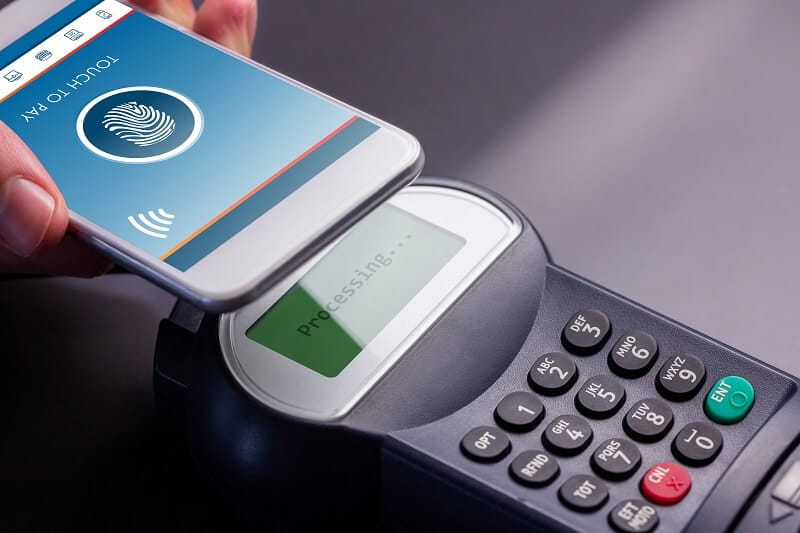
The future will see mobile payments increasingly used for transactions in stores and in unattended situations.
Paying with mobile wallets and NFC payment
What is NFC technology you might be asking and what does it have to do with phone payments? With NFC (Near field communication) two devices communicate wirelessly when in close proximity and share data quickly, and for security purposes this data can’t communicate beyond a 4-inch range. Mobile wallets use NFC to complete transactions and this technology is used in payment apps like Google Pay, Samsung Pay and Apple Pay. NFC technology can also be installed in wearable payment technology like watches, rings, wristbands and other clothing items.
QR code payments via social wallets
At present two thirds of mobile payment users are in Asia, mostly China and India, and these are predominantly via QR code payment. In China the two giant social wallets are WeChat Pay and Alipay, which see over one billion daily transactions with QR codes. All over China, consumers scan and pay, while the payment is deducted from their bank accounts.
Pay with a customized loyalty app
Did you know that the most downloaded mobile payment app in the US in 2018 was Starbucks‘ consumer loyalty app? It has more users than Apple Pay (23 million vs 22 million) and is predicted to remain the top app for the next few years.
Loyalty apps give customers direct benefits from brands they interact with regularly and to provide users a more meaningful interaction with your business. Depending on the products and services you offer, this payment means might be worth your while because of its potential for consumer engagement. Developing an app can take a lot of time and resources. You might consider a white label loyalty app or integrating payment capabilities to your existing app via an API.
Start accepting mobile payments
2. Remote Monitoring – Eyes in the Field
If you’re running an absentee business the hardest aspect is keeping abreast of what’s going on at multiple unattended locations. Adding telemetry, the technical name for remote measurement and monitoring, is one way to ensure your finger is always on the pulse with remote locations and not leaving your business up to guesswork. Let’s look at the many benefits adopting telemetry can offer business operators.
- Fleet management capabilities – When your business grows beyond a handful of locations, a remote management system needs to be in place. Telemetry can assist you with fleet management, helping you keep an eye on multiple machines and freeing you from having to visit physically.
- Communication tool – With telemetry in place you can check whether a machine is connected or if something isn’t working without having to wait for the problem to arise from complaints or an onsite visit. Overseeing continuous connectivity ensures your business’ services or products are always available, allowing you to go about your business confidently. You can even make telemetry work around your schedule and preferences, setting up customizable alerts that inform you when something is wrong or when certain functions are exceeding normal activity levels.
- Access to exact data – Telemetry feeds you current information and gives you precise data, unlike data recorded in the field by workers, which might be incorrectly logged. With access to a log of what’s been happening you now have a more exact idea of how your monthly sales are doing and where your business stands.
- Insights for improvements – Adding telemetric capabilities gives you the power to make decisions based off of accurate data so that you can understand your business and make it run more efficiently, responding to consumer demand. You can use the raw data to gain deeper insights into your sales, inventory management, and consumer behavior and change some of these aspects to optimize your sales opportunities and bottom line.
3. Remote Management – Control From Any Location
Invest in management system software and learn how to use it – When you invest in management software you can introduce a host of benefits for your business. A good management system takes time to learn and will offer you so much more than tracking cashless payments. Remote management capabilities allow you to control more aspects of your business from any location. You only need a computer with internet access, and you’re set to run your business
- Savings & better time management – The ability to control devices from afar saves you a lot of time and energy as well as preventing unnecessary onsite visits. This is especially useful if you have unattended businesses in multiple locations because it can save you on labor and fuel costs.

Stock your van more efficiently with the use of inventory management tools, loading only the products that need to go out.
- Inventory management – If you run vending machine business, a good management system can help you know which products are running low and which products sell well. Using a picklist you can make use of pre-kitting in the warehouse. Your drivers and re-stockers don’t have to haul stock that will spoil, and they can load fewer items. This will also make their work at the vending machine more efficient.
- Alerts & Reports – A remote management system contains a lot of great features, but it can take time to access them. A better system will offer you customizable reports to let you know what’s going on with the main aspects of your business, without you having to search. A top system will also offer error warnings that can deliver notifications to your phone or email, enabling you to deal with machine malfunctions in real time, averting machine damage, spoiled stock or loss of sales.

Remote management allows you to decrease the amount of labor required for cash activities and improve your cash accountability.
- Cash accountability – A business that deals with cash requires a lot of activities after payment occurs and cash is collected – counting, going to the bank and so forth. These manual tasks can be laborious and susceptible to human error. With both cash and cashless payments recorded for you and visible in your management system, you will have access to accurate data and can account for all cash being used in your operations.
- Price changes – The ability to update prices remotely gives you the freedom to experiment with price points. This way you can determine the optimal price point without having to go to each machine physically and don’t lose valuable time.
- Refunds – Reduce labor costs by administering immediate refunds remotely. This quick fix to faulty vends makes for satisfied customers and reduces the labor processing a refund typically involves.
Ask us about our management tools
4. Offer Prepaid Payment Options
In addition to offering multiple payment methods, adding closed loop payments (i.e. prepaid cards and postpaid cards or via loyalty apps) is another large market that could open up your business to more sales.
More than a loadable credit card – Prepaid payment comes in a variety of forms: physical cards, employee cards, key fobs, and digital credit on mobile apps. They typically process faster than credit cards and cash while offering consumers more security. In addition, they can provide consumers with benefits like discounts and other loyalty rewards.
Closed environments present a large, loyal customer base – A lot of people opt to pay with pre-loaded credit: the underbanked, who don’t have credit cards, and others because they’re given prepaid credit by their employers. Companies offer significant revenue opportunities as they have a large customer base, and this will give you business on a regular basis, offering you higher sales opportunities.
5. Don’t Dismiss Cash
Despite our speak of a cashless society, cash is not going away any time soon. While it is anticipated that cashless will supersede cash, as it has already been doing for decades, a lot of people like the unbanked, the underbanked, children and the elderly still use cash.
With this in mind, it’s important to offer as many payment options as possible, offering something that everyone is comfortable with. If your demographic prefers cash, it’s important to offer this and not to replace your cash capabilities with cashless completely. To futureproof your business it’s better to cater to both needs. How can you cater to both audiences? You should hold onto your coin mechs and bill validators. Better than that, look for a device that combines both cash and cashless payments.
Even though cash use is on the decline, and we recognize that cash handling adds time-consuming activities to your business. To reduce the labor on these activities you can make use of services to make your daily operations with cash easier. Take advantage of technology that provides cash accountability as well as notifications when a cash box is full or close to being full. This can make your operations more efficient and reduce the hassles cash presents.
6. Embrace New Payment Trends
Payment is becoming more diverse and being integrated into more everyday items for example wearables, and key fobs. New technology is also being integrated into existing payment methods like biometric credit cards to enhance functionality. These payment options also need to be considered when choosing a point-of-sale device as they can ensure every consumer is able to interact with your business.
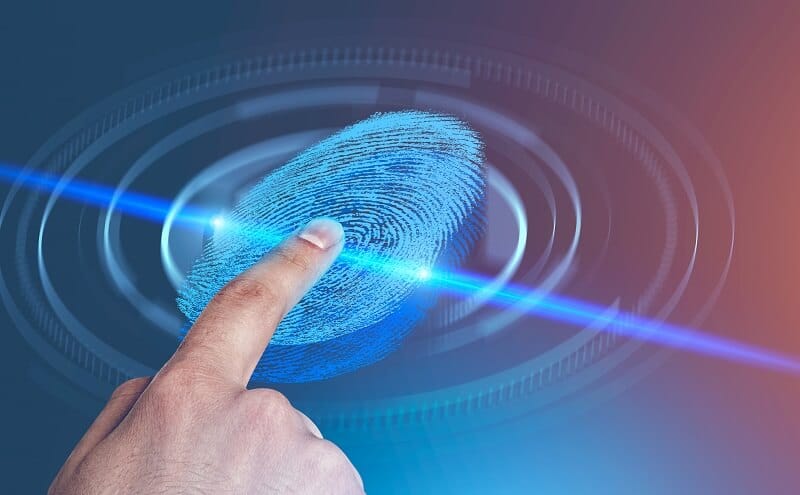
New payment technology will embrace biometric authentication, which includes facial recognition, fingerprints, retina scans, and voice identification, among others.
Biometric payment – Biometric payment integrates physiological identifying factors into payment to reduce fraud and includes fingerprint scanning, facial recognition, voice recognition, eye scanning, and vein pattern among others. These sorts of identification also offer more frictionless authentication than PIN codes. According to research by Goode Intelligence, it’s predicted that by 2023, 2.6 billion people will be using biometric payments and by the same year it’s expected that 579 million biometric payment cards will be in usage for higher value purchases globally.
The method with the most traction at the moment is fingerprint recognition, which provides a balance between security and convenience, offering a one second matching speed. This is significantly faster than the time a PIN code entry takes but not as fast as contactless payment, however this overcomes the spending cap that limits contactless payments.
Request to Pay (RtP) – Open banking in the EU and the UK will bring about new banking concepts that are expected to have a global affect. One service that will have an impact on businesses receiving monthly fees from customers is Request to Pay. This service allows consumers to pay their bills in real time, either in full or partially, as well as to request to extend or postpone a payment date, refuse a payment and communicate with the processor. This messaging service will complement existing payment services, offering consumers more control, transparency and flexibility, allowing for smarter money management.
Some of these new payment methods will fade into history while others can become mainstream. Some might become dominant in certain regions or with a group of customers.
Adopting these methods before they take off futureproofs your business and can nurture loyalty among early adopters. Advertise that you offer these innovative methods to appeal to the widest audience possible.
7. Offer the Best Support
Be more than provider of products and services who sends a monthly bill. Stand out from your competitors by being there for your customers when they have questions or need help with your offering. There are several ways to approach this.
- Provide approachable support – Be available by means you know your customers to prefer. This could be phone support, email, texting, online, via social media or in-app support. However your customers like communicating, be there, be responsive and be prompt. Be friendly and don’t regard your customers as something to be “dealt” with.
- Impart technical know-how – Empower your employees with technical knowledge and they can educate your customers. Offer product training and keep customers updated with newsletters and technical documentation. Hold webinars explaining how updates work or release how-to videos about product changes to keep customers informed.
- Listen to your customer needs – Your customers are your best sources for ideas, giving you free insights into how your products and services are used in day-to-day life. Give your customers the platform to provide you feedback and use this to improve your offering and customer support.
8. APIs and New Customer Expectations
It’s not just the payment methods that will change but customer expectations are set to change. New non-banking players are entering the market thanks to the EU’s Revised Payment Service Directive (aka PSD2). Via APIs third-party fintech companies will be able to offer financial services to manage customer finances, driven by technology and consumer preferences.
These solutions will make personal finances more transparent and more understandable for the layman. It is important for you to learn what these solutions will be and how they will influence consumer behavior and expectations. Investigate how will they affect your business, if at all, and whether consumers will interact with your products differently because of these services or changed financial behaviors, and then make the according changes.
9. Make Security a Priority
Not only should security be a priority, but it should be a given so that your customers feel at ease using your services without any reservations. It’s important to show your certifications and demonstrate which regulations you are complying with.
EMV chip cards – EMV credit cards are now a global chip card standard however contactless payment hasn’t quite caught on in the US. This technology has been rolled out nationwide across the states and will soon be a commonly requested payment acceptance. Ensure your business caters to this technology.
Credit card tokenization – Another form of security that is stronger than magnetic stripe is NFC payments, which use credit card tokenization and encryption. Mobile wallet payment usage is on the up and offering this form of payment has added security benefits for operators, consumers and issuers. Most consumers have a phone and mobile wallet apps don’t cost anything to download. In fact, many are built into the phones like Samsung Pay and Apple Pay.
10. Think Global & Offer a Universal Cashless Solution
Currency means money is not always interoperable wherever you go but cashless payments have opened up a lot of the world to cross-border transactions without needing to exchange currencies. For a small fee a consumer’s credit card company will take care of it for you, and this means people can travel more spontaneously and purchase items more spontaneously.
Your payment solution should be adaptable to local landscapes as well as universally understood so that sales are open to the biggest audience. To be prepared for the a more universal clientele your unattended machine business needs to be something everyone can approach. This includes catering to the payment preferences of a region and a locations’ regular customers. Common languages of a region or its frequent visitors should be considered.
Keep your finger on the pulse of other emerging payment schemes. It’s worth paying attention to the rest of the world and what payment methods and trends are popular outside your corner of the world. For example QR codes are the dominant payment choice for the Chinese and are an important payment method to integrate.
11. BI: Data Offers User Insights
We live in a data heavy world, where so much data is collected and available. This can be used to gain insight into your customer preferences. The data might look like numbers, however there are stories in data – stories about your consumers. Not everyone can pinpoint the story straightaway and often need to use technology to recognize these behavior patterns. In the unattended machine business this is where telemetry and management software come into play.
Every piece of data, whether its raw or charts, can be used to better understand your consumers. You can look at the bestselling items, the region, popular times of day and popular days of the week, what payment methods are used and seldom used. You can use these to identify trends and create promotions, appealing to existing consumer needs instead of using guesswork for consumer engagement.
12. Consumer Engagement – Loyalty Goes Digital
In the unattended retail industry it’s not just cashless payments that business operators need to be prepared for. You also need to understand how consumer interact with the world, and its more commonly through a smartphone. In app mad world, retail has also joined the trend because it converts and because loyalty is increasingly driving consumer choice.
How to Gain Repeat Customers: Loyalty Payment Apps & Digital Loyalty Cards
A payment app gives you the opportunity to have a more direct relationship with your consumers, with continuous exchanges and benefits to keep consumers choosing your services. Apps are typically expensive to create and take a lot of time. The option for to white label an existing app can give you access to the benefits of loyalty programs affordably and quickly.
Many of the promotions used in digital engagement are lifted straight from traditional retail: digital punch cards, discounts, cash back, gamification, or bonus credit. Using these you can turn one-time visitors into frequent customers, giving you a steady source of revenue. It’s important for the campaigns toy create to be rewarding without effort on the consumer’s side. They also need to be measurable for you to see the impact a campaign has on your revenue.
Ask us about our loyalty solutions
13. The Convenience of Real-Time Notifications
Living in a fast-paced world where time is money, there’s a certain leap of faith in the unattended machine business. Even with telemetry and remote device management giving you more insights into real-time data, operators really need to actively look through this data to prevent operational errors, which can make a difference for saving on maintenance and labor. Whether you have a small number of machines or a large fleet this can be very time-consuming and prevent you from getting on with more important matters.
So how can you be more pre-emptive in your machine management? You need to be informed about the details that affect your business circumstances. One way to improve this aspect of your operations is to choose a system with an alert system that can be delivered to you more directly – via an app, text message or email. This allows any errors and adverse events to be pinpointed, in an easily receivable format. This convenience lets you know when to get involved and gives you the space to relax.

Businesses can prevent a lot of revenue loss when operators receive real-time notifications. A good alert system features customization, assisting you with your business needs.
You need to look for a warning system that can be customizable to your operational needs. Whether it be temperatures change warnings for fresh foods, or power outs for kiddie rides or prize levels for claw machines, you need to be able to determine the thresholds (times, events, days, numbers and so forth) because maybe you don’t want to get disturbed in the middle of the night or do want to be informed on the weekends.
14. Make Use of Retail Price Tricks
An advantage of cashless payment is that you can change the way you would traditionally price your products. Look to the world of retail, which has employed many psychological price strategies to influence consumers. A lot of these tried and trusted tricks can be applied at your machine.
Charm Pricing – In situations where you would have to give consumers banknotes and coins as change, your prices are limited by round numbers. Without cash, you can apply charm pricing – prices ending in 90, 95 or 99 cents. Because consumers pay more attention to the numbers to the left of the decimal points, the price seems cheaper than it is. In retail, this strategy is applied across the board, to items both large and small. It’s also been found to be effective in small amounts such as $1,49 vs. $1.50. Even though the difference might be only a few cents, charm prices drive sales more than whole prices.
Price Anchoring – Sometimes consumers need a little context before they are prepared to buy a product. To boost sales of items consumers regard as too pricey, you can apply a well-known retail tactic: price anchoring. This is where retailers place premium products next to standard items to create a sense of pricing relativity. This is why you sometimes see a few high-end items in a store that don’t seem to sell much. The expensively priced items make the consumer comfortable with the other store items’ pricing and can influence consumers to think the standard item’s pricing is reasonable. This increases the sales of items that would otherwise be considered expensive.
Prestige Pricing – With cashless payment options, you can more expensive products including technology, brand cosmetics, luxury food items, or even wearables like clothing or shoes. For this prestige pricing is a good strategy to adopt. Unlike charm pricing, with prestige pricing you can price items in whole numbers and leave off the decimals. Whole-numbered prices communicate that items are high-end and luxurious. Consumer uses pricing to assess quality and if the price is marked too low, the consumer will wonder if the item is faulty or think it undesirable.
Price Variation – If there are too many options in a category it can be difficult for consumers to choose which product they want. A large range of products can even discourage a purchase. Similarly, if there are too many options in the same price category, shoppers may have a hard time deciding what to buy. Too much choice could discourage impulse shopping. With cashless payments, you can prevent any indecision by varying prices by tens of cents. You can also look at the most popular items and play with price to determine the best pricing for your product mix.
There you have Nayax’s 14 tips to prepare for a cashless future. A cashless society brings many exciting technological developments and business opportunities to improve your operations. Some of the changes we have suggested in this list are straightforward while others will take longer to implement. Some might not be suitable for your unattended business, but the important thing is to think about how your business could change for the better and consider solutions that will work in a cashless world.

